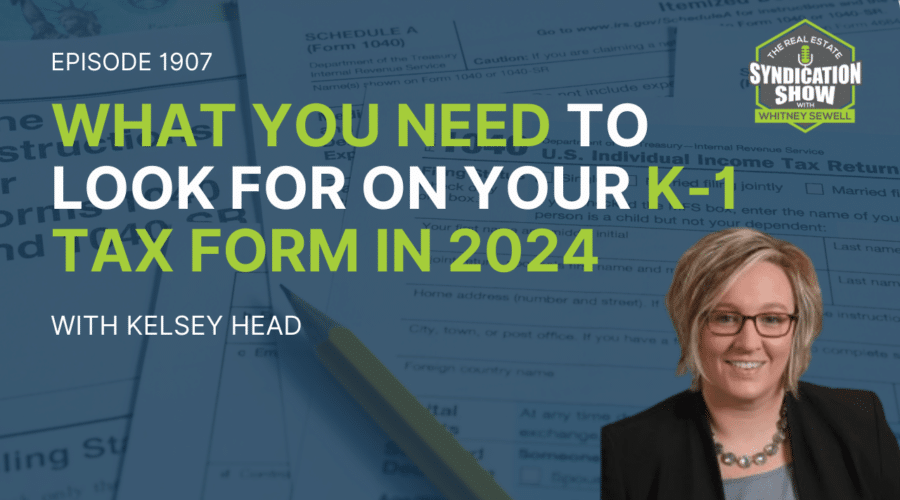For a multifamily syndicator, keeping the property in great shape is necessary for maintaining a high quality of living in the community. It is also imperative to add value to the property if you want to keep your tenants happy and satisfied. If you can do that, tenants will be more willing to pay extra rent in return for upgraded units, and for outdoor spaces and shared facilities that nurture a sense of community. Hence, value-add renovations will make it easier for property owners to command increased rental prices. This, in turn, will create greater revenue and boost profits for investors.
In this post, I want to share with you an incisive look into value-add multifamily renovations, the subject of my recent conversation with Rich Trepanier of Gage Multifamily Services. He and I discussed renovation strategies in multifamily properties, with Rich bringing to the table a wealth of knowledge and insider insights into value-add renovations gathered from over 15 years and over 2,000 units of multifamily renovation experience. If you want to listen to the full episode, click here.
What Is Value-Add Multifamily Renovation?
The term “value-add” in real estate investments means to drive appreciation or increase the value of an asset by improving the property and the community, thus increasing profit.
When it comes to multifamily real estate or apartments, the concept is applied on a massive scale (think hundreds of apartment units). Renovations on a value-add multifamily property typically include individual unit upgrades (fresh paint, new cabinets, appliances, countertops, flooring, fixtures), exterior makeovers (paint on building exteriors, landscaping, new signage, car park), and refurbishing of amenities and shared spaces (clubhouse, fitness center, park and playground, pools, and even sprucing up of the leasing office).
The renovation project is implemented over a timeline to present a better product to renters and improve their living conditions of tenants. For investors, value-add renovations can give a positive increase in return on investment from increased rents.
Benefits of Value-Add Renovation
- Increased Rental Rates: Upgraded units bring comfort and satisfaction to tenants who will be more than willing to pay a higher price tag for a better quality of life. A higher rental price brings in larger income from the property.
- Higher Lease Renewal Rate: With renovated units and more amenities, you will meet more needs and demands of occupants and potential tenants. With higher satisfaction, there’s a higher probability they will renew their lease, keeping your property occupancy rate high and ensuring a constant flow of income.
Gain Competitive Advantage: Potential tenants will be attracted to handsome, well-kept apartments with functional amenities when looking at properties to lease. With value-add renovations, your property can have that appeal and gain an edge over other rentals.
Common Pitfalls in Value-Add Renovation
Value-add renovation on a massive scale comes with its own set of potential pitfalls. Done wrong, property owners could end up accumulating a huge debt and an unfinished project.
Here are some common pitfalls that you should avoid to ensure a smooth project flow:
- Budgeting Renovation CapEx by Doors
“I’m a big proponent of interior renovations based on square footage, not by doors. The reason is very simple: You have a $5,000 a door budget which works well for a one-bedroom, one-bath, 700-square-foot unit but that doesn’t translate very well to a three-bedroom, two-bath, 1200-square-foot unit,” tells Rich.
When setting the budget for value-add renovation, Rich recommends estimating the project cost by square footage rather than allocating the same budget for all apartment units that will be fixed. This will give a more accurate estimate of the cost – especially with apartment units varying in size.
“I tell the investors that we work with to look at value-add renovations from a square footage standpoint. That way, we can minimize the risk of renovations costs exceeding initial estimates. That will leave us not being able to achieve the targeted number of units to fix,” cautions Rich.
- Lack of Contingency Budget in the Business Plan
Rich observed that it is common in value-add business plans to omit contingency budgets. “In my own business, the construction side on Gage Multifamily Services, we always add between 3% to 5% contingency on our bid to our customers. That helps us alleviate any issues we might encounter that we might not see during the budget planning process,” recommends Rich.
Once you know how much you can afford to spend, set aside a percentage of your available funds for unexpected expenses. This is important because some problems may arise or some materials may cost more than originally projected. By setting aside buffer funds before beginning your project, you know you will have money to finish your project no matter what happens.
- Overstaffed Renovation Project Team
“In a project team, there could be a property manager, an asset manager, and a director of construction who’s historically involved and paid with a construction management fee, all working with the contractor,” says Rich. “But, if you have a good relationship with the general contractor, and a good asset manager on your team, they can work directly together. That way, you can effectively remove the director of construction or the property manager, eliminate the management fee and save that for additional funding.” Rich also adds that property managers traditionally charge between 5% and 7% of the gross expenses for the renovation to manage a project from start to finish.
Rich highlights the value of a good relationship and open communication between the investor/property owner and the general contractor. “As a general contractor, my most successful renovation projects are with the investors themselves. Somebody that can pick up the phone and have a candid conversation, a positive conversation even in very difficult situations,” says Rich. A well-formed team is a key to excellent teamwork and the successful execution of your renovation plan.
- Hiring a Bad Contractor
Hiring the right contractor is crucial as they will oversee the implementation of your value-add renovation project. Hire a good one and your project will likely flow efficiently. Hire poorly, and you’ll be plagued with troubles and you may find yourself behind schedule and over budget.
Rich suggests that investors should engage local contractors early in the project planning stages. “Put together a list of three to five contractors while you’re doing your due diligence. Interview those contractors. Any general contractor who has played in this multifamily renovation space can walk an interior renovation and give you a good budget and a good plan within 24 to 48 hours. It’s not that difficult.”
He also recommends that property owners going into a new market reach out to the local apartment association. As a member of an apartment association, you can access a directory of products and services from various local vendors, including general contractors. You may even ask for recommendations from reputable members.
“Shortlist potential vendors and contractors. Reach out to them and interview those that you potentially want to work with. When putting together your CapEx budget, consult and countercheck with different vendors,” advises Rich.
More tips:
- Make sure the contractor’s cost estimates and scope of work are detailed with descriptions and quantities. Scopes of work must be attached to the contracts.
- Ask your contractor for weekly updates on who, what, where, when, and why of the previous week. Identify completed works the previous week and what is scheduled for the next.
- Doing Interior Renovations First
“It’s not unreasonable to start interior renovations immediately. However, one of the most important things to do for a value-add renovation is to put the brand on the community first. So, begin with exterior renovations then consider signage replacement. Update that signage outside the community as well as on the buildings first. A new name, a new brand, new effort,” recommends Rich.
Rich strongly suggests starting with an upgrade of the curb appeal, such as a fresh coat of paint in the exterior of the buildings, paying special attention to the buildings that are close to the street. What people see first is where you want to concentrate on – then you can work your way back. Include the exterior of the leasing office in your early renovations, then spruce up its interiors afterward. Getting the first few buildings done early is a good way to begin the upgrade as it shows the locals that you are investing not only in the property but also in the community as well.
With an appealing exterior, more potential tenants will be attracted to tour the community and you’ll have the opportunity to show them the planned interior renovations and model layouts as well. “Whatever that first pathway for that potential resident, that is where I would recommend renovating first,” adds Rich.
Final Thoughts
There are pitfalls, ups and downs, and issues that even a seasoned contractor can’t predict in value-add multifamily renovations. But with thorough market research and due diligence, and a solid value-add plan, you’ll be ready to take on the challenges. Just remember, open and constant communication, and teamwork with your contractor gives you an edge for success.
—-
Interested to learn more about investing? If you are looking for good investment opportunities for your portfolio, we encourage you to talk with one of our experts today. Email us at info@lifebridgecapital.com or call to see if LifeBridge Capital’s investments are a fit for you.



